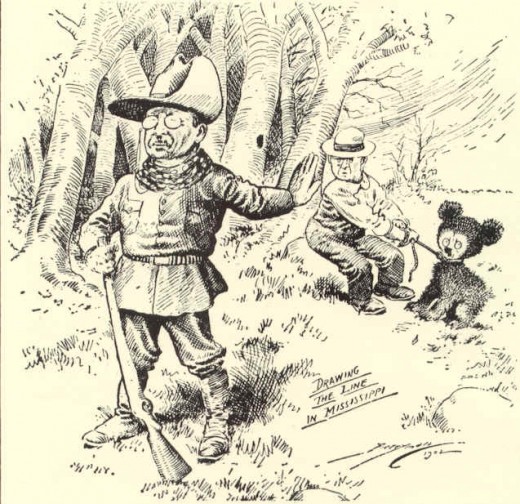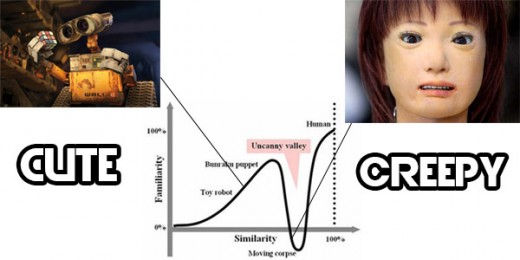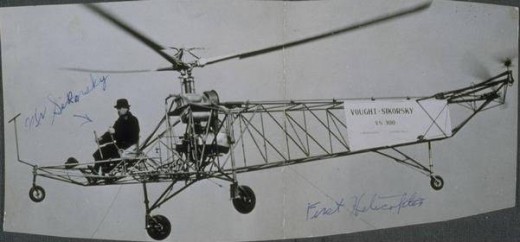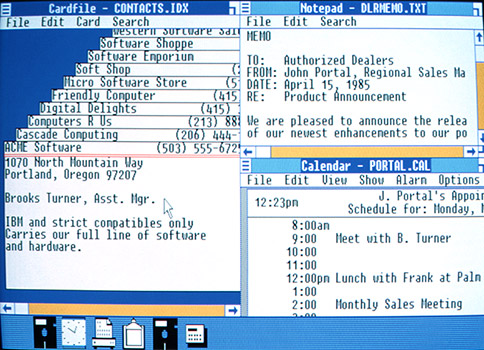20 MORE Significant Inventions of the 20th Century
I have decided to be more like Hollywood. I have taken something mildly successful and made a sequel seven years later that nobody asked for. Like before, this is a list of 20th century inventions that have made an impact in history or contributed to our culture in some way, hence the significance.
1. Escalator, 1900

Where would our shopping malls be without the wonderful escalator? Several patents were filed in the late 19th century, and one working prototype lacked the familiar comb design we know today and actually had people step to the side when the stairs came to an end. Charles Seeburger teamed up with Otis Elevator Company to produce the first commercial escalator. Thanks to the escalator, we don’t have to lug our overpriced shoes and boxes of Cinnabon up actual flights of stairs.
2. Electric Air Conditioner, 1902

You know what’s worse than being outside in sweltering heat? Going inside a building in the sweltering heat and hanging around sweaty people. Willis Carrier used his knowledge of heating things with steam and reversed the process by sending air through cold coils filled with cold water. Not only was it able to control temperature, but humidity as well. Thanks to Carrier, living in hot climates is lot more tolerable.
3. Windshield Wipers, 1903

Cars are great and all but how were you supposed to go to the dry goods store when it rained? Enter the windshield wiper. The first one was patented in 1903 by Mary Anderson, a woman! In 1903! They weren’t even allowed to vote yet! It was operated MANUALLY with a lever that was inside the vehicle, which means when it rained people opted for very short trips. Now of course, they turn on with a flick of a switch. Some modern cars have the wipers automatically turn on with “rain sensing technology." Seriously, how pampered are we as a society?
4. Teddy Bear, 1903


The next time you give a cute cuddly teddy bear to a child or as a last minute gift to your wife or girlfriend, be sure to relate the history of the toy. When President Theodore Roosevelt went on a bear hunting trip in Mississippi in 1902, his attendants cornered, clubbed and tied a black bear after it was chased by hounds. Roosevelt refused to shoot the helpless animal deeming it unsportsmanlike but suggested it be put out of its misery. This became the subject of a political cartoon, and thus inspired the invention of the teddy bear. Have fun with your toy, kids!
5. MDMA (Ecstasy), 1913

As long as there has been human consciousness there has been a need to alter it with various substances. MDMA-better known as “Ecstasy”-evokes feelings of euphoria, closeness to others, and mild hallucinations. It also causes users to suck on pacifiers to keep their teeth from grinding. First synthesized in 1912 by Merck chemist Anton Köllisch, its initial intended use was to stop abnormal bleeding. Now “ravers” take “Molly” while they listen to something called “Dubstep”(?) Am I saying these things right?
6. Tank, 1915

If necessity is the mother of invention then war is its aggressive, alcoholic stepfather. The earliest concept of the armored mobile artillery was imagined by Leonardo da Vinci. The first working prototype was developed in Britain in 1915. As with a lot of early prototypes it was unwieldy at 14 tons and crawled along at two miles per hour. And it got stuck a lot. Further improvements were made throughout WWI, and tanks became more prominent land warfare vehicles, because neither the Allies nor the Central Powers were going to get anywhere stuck in those trenches.
7. Robot, 1928

The idea of automated machines have been around since ancient times, but the actual term “robot” was coined in 1921. The first humanoid robot was invented by W.H. Richards. It consisted of aluminum powered by electro magnets and a 12 volt power source that was operated by remote control. Real and fictional robots come in all shapes and sizes and functions. Most are useful like the ones in factories or those that diffuse bombs. Some are terrifying like the ones that can outrun people or those creepy Japanese androids that look human, but not quite human enough. It is said that by 2050 artificial intelligence will surpass the human brain in an event called the “Singularity”. I, for one, will welcome our new robot overlords.
8. Frozen Food, 1929

The process of freezing foods to preserve them has been used by people living in cold climates for centuries. Beginning in 1929, Clarence Birdseye introduced “flash-freezing” to preserve meals. This explains why a lot of frozen items in the supermarket have his name on it. That just makes perfect sense.
9. Canned Beer, 1935

I love beer. Sometimes I don’t have a bottle opener. Problem solved.
10. RADAR, 1935

Though the concept for radar began as early as 1886 and even earlier with bats and whales, the modern radar as we know it was developed in 1935. France, Germany, Italy, Japan, the Netherlands, the USSR, the UK, and the USA all developed the technology independently and in secret because of course that’s what you would do. By the time WWII rolled around, radar was a fully evolved pulse system used to detect objects using radio waves to determine their range, speed, altitude, and direction. Radar is one of the reasons we don’t have sudden airstrikes from the Russians or the Chinese.
11. Monopoly, 1936

Monopolies are bad for real life economies and they are just as bad for board games. Nothing exemplifies this more than the board game known as Monopoly. Originally designed by Elizabeth Phillips in 1903 to illustrate the evils of monopolizing land ownership, it was popularized when it was licensed by Parker Brothers in 1936. The game has been known to break up families and cause fist fights among friends, whether it was over causing other players to go bankrupt or over who gets to be the race car. Also it took untold hours to finish. A game I started playing in 1997 is still going on to this day.
12. Helicopter, 1939

The ability to fly through the air using machines is an absolute marvel of human achievement. Thanks to the Wright Brothers for inventing the airplane. Sometimes, though there’s not enough room for a runway to build up the speed necessary for take-off. Enter the helicopter. The concept of a vertical lift achieved by a spinning rotor has been around since 400 BC. But the first operational helicopter was developed in 1939 by engineer Igor Sikorsky, with full scale production occurring in 1942. The familiar design we know today with both the main rotor and the anti-torque tail rotor has a broad array of uses from reporting traffic, search and rescue, and support for ground forces in war. It's also known as a "chopper" or in some circles "ghetto bird."
13. Nuclear Bomb, 1945

There has never been a more brutally efficient means of mass destruction invented by man than nuclear weapons. A nuclear fission explosion is the result of a chain reaction ignited by the absorption of a thermal neutron into an enriched uranium atom. The race to build the bomb was accelerated by a little scuffle called World War II, when the U.S., the U.K. and Canada collaborated on the Manhattan Project in a race against the Nazi’s own atomic bomb project.
Long story short, the U.S. dropped two atomic bombs on Japan, ending WWII. Then the Cold War happened between the U.S. and the Soviet Union, and fast forward to today and crazy rogue nations want nuclear weapons. Nothing to worry about, right?
14. Birth Control Pill, 1960

Most couples don’t want 19 kids and counting, so when couples want to engage in some good lovin’ without worrying about unwanted pregnancy there’s the birth control pill. The most well known oral contraceptive is a combination of estrogen and progestin which chemically inhibits female fertility. Development of the pill began as early as the 30s and continued on throughout the 50s with the United States approving its first use in 1960. It’s more effective than the rhythm method and “early withdrawal”.
15. Kevlar, 1965

When we hear the name Kevlar we think of body armor used by the military and police, but it is actually a trademarked synthetic fiber with multiple applications. Invented in 1965 by Stephanie Kwolek while working for DuPont, this incredibly strong and light material is used in everything from the aforementioned personal protection to sports equipment, cable, and smartphones. It is even used in some non-stick frying pans.
16. ATM, 1967

When dealing with daily tasks nothing gives me such a sense of relief as not having to talk to another human being. So I can’t imagine a time when you actually had to walk into a bank, fill out a withdrawal slip, and talk to a teller just to get out a twenty. In this instance the ATM (Automated Teller Machine) is one of the greatest inventions ever. The very first one was put to use in North London, UK in 1967. A friendly reminder: just refer to it as an ATM because the term “ATM machine” is redundant.
17. Tab on a Drink Can, 1975

Some inventions are revolutionary: they either save countless lives, (modern medicine) or advance our species in amazing ways (space flight) But sometimes little innovations that make our lives easier rank up there as well. In the old days if you wanted to quench your thirst and you had a canned drink, you had to have a can opener or some sort of puncturing tool to open it. First there were pull tabs, but they caused a lot of litter and choking hazards. When the familiar push tab was invented by Daniel F. Cudzik in the 70’s, opening aluminum cans became a lot easier for consumers as well as Mother Earth.
18. Post-It Notes, 1977

Post It Notes, also known by their generic term “sticky notes” are all over offices everywhere. There’s probably one stuck to your monitor right now with a date or a phone number on it. Interestingly, both the adhesive and the color were accidental. Working for 3M in 1968, Dr. Spencer Silver was attempting to develop a super strong adhesive but instead wound up with a “low tack” adhesive that was reusable and didn’t leave a residue. The familiar yellow color was used because another lab within the company only had yellow scrap paper to use. Though it was initially introduced as “Press ‘n’ Peel” notes in 1977 it was reintroduced as Post- It Notes in 1980 to more commercial success.
19. Microsoft Windows, 1985

Graphical User Interfaces (GUI) have been around in computers since the 1970s. Then Microsoft introduced the ubiquitous Windows operating system in 1985, to compete with Apple’s Mac OS. It started off as a mere extension of MS-DOS, and then it eventually grew to dominate the world with an eventual 90% market share, making Bill Gates a little bit of cash. Windows’ dominance peaked in the 90s, with nearly all operating systems used in business on a Microsoft platform. As a result Windows usage is ingrained in all living adults who are even marginally computer literate.
20. DVD, 1995

VHS tapes are cumbersome and prone to get chewed up by VCRs. Laserdiscs may have high quality but they are big, heavy, and expensive. That's where the Digital Video Disc (DVD) comes in. Developed by Philips, Sony, Toshiba, and Panasonic, DVDs are the size of convenient CDs and can hold from anywhere between 4 and 17 GB of data. In the late 90s and through the 2000s, it was the format of choice for movies until the higher capacity Blu Ray discs and digital streaming started taking over. The best part? Not having to rewind! Can you believe rewind fees were a thing?







